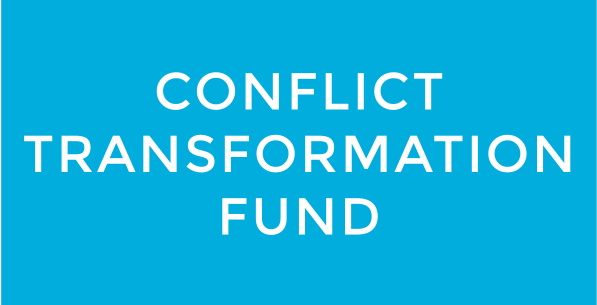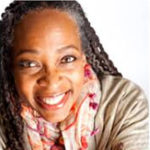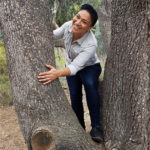Core Competencies of Conflict Literacy
The 10 Core Competencies of Conflict Literacy emerged from the collective wisdom of over two dozen leading thinkers, innovators, and practitioners in the conflict transformation arena whom we interviewed during our 2017 Listening Project.
Although we were careful to collect ideas from a wide variety of perspectives, we are also aware that this is just one way to articulate the range of skills and understandings that build toward conflict literacy. Successful teaching and learning draws on the wisdom of each community and is mindful of cultural, contextual, philosophical and political differences.
1. Embrace Helpful Attitudes & Beliefs About Conflict
Conflict is an opportunity for positive change. Even so, some of us do everything we can to avoid it! When we can bring curiosity, humility and flexibility of thought to a conflict, we’re more likely to appreciate the nuance and complexity of a given situation. It helps to recognize that even in our certainty, we could be wrong – or at least hold only a partial truth. We can commit to engage skillfully with others, even if they don’t share the same attitudes and beliefs. When even just one party in a conflict shows up competently, it can have a positive influence on the outcome.
I want to propose that conflict is neutral – just the meeting point of differences. What makes a conflict lead to breakthrough, instead of breakdown, is when we operate from the ‘stretch zone’ — sharing our vulnerability and listening deeply for each other’s complexities and truths. When we can make space for differences to come forward in an open and engaging way, then conflict offers an opportunity for learning, healing, and synergizing new solutions.
Shilpa Jain, YES!
2. Create Basic Frameworks for Understanding Conflict
Conflict can be perplexing. It helps to develop an understanding of some basic frameworks, definitions, and distinctions. For example, it is useful to understand different conflict-styles (avoiding, accommodating, competing, etc.) and various frames used in conflict (power-based, rights-based, interest-based). Essential to developing conflict literacy is gaining a deeper understanding of power dynamics, historical trauma, and cultural awareness, while also going beyond the trap of identity politics.
What I have learned about conflict is that it is most constructive, and least destructive, when it is at the optimal “temperature.” If it is too hot, it burns and ultimately destroys. If it is too cold, it freezes and ultimately paralyzes. What we need is conflict that transforms (or “cooks”) into opportunities for positive growth, change, and innovation.
3. Establish Conditions for Learning & Transformation
Working with conflict can be challenging and asks us to step outside of our comfort zones. We can create containers for learning and transformation by building trust before we attempt to surface and engage with conflict. We can establish a “brave space” – in which disagreements are allowed, but we treat each other with respect. We can create agreements around honesty, inviting vulnerability, and respecting different opinions. Agreements must suit the specific needs of a group within their cultural context.
Sanctuary is partly what we create – either as heart space or as a container. We won’t resolve conflicts without a sense of safety, or without being willing to take a risk. In heart spaces we can deepen and discover, explore and learn, risk and relate. True sanctuary lies in openness and relationship. A third party/mediator, coach or mentor can help create spaces where safety and risk can combine.
Ken Cloke, Mediators Beyond Borders
4. Build Awareness of Physical & Emotional Responses to Conflict
Social-emotional intelligence lives in both the body and the mind. Essential to exploring our role in creating and responding to conflict is developing and practicing self-reflection skills to notice what’s happening inside us – both physically and emotionally. This includes reading and articulating the body’s signals and messages, and learning how our own ancestry and history impacts how we engage in conflict. Through self-reflection that grows our self-awareness, we gain freedom to engage the body and mind in transforming conflict.
It is a personal practice to navigate through our internal experience while we are in relationship with others. How do we pay attention to various dimensions of what is happening in us? What judgements are we making? What emotions and physical feelings are we having? What do we not know? How do we align with our understanding of who we are at our personal best?
5. Enhance Ability to Regulate Emotions While Engaging in Conflict
Conflict, by its very nature, demands a lot of us because it can trigger strong emotions. Our usual self-regulation is challenged precisely in the moment we most need to self-regulate! We can develop the capacity to sit with our discomfort, manage intense emotions and express anger constructively. Cultivating presence and patience support this, along with tools for shifting our state, gaining perspective and creating space between our initial reaction and a potentially more helpful, constructive response.
When in conflict, we need to know how to shift our nervous system from fight, flight, or freeze by slowing down and being present. Breathwork, eye contact, and body awareness are crucial for coming back to the stretch zone in the midst of conflict, even while it’s happening. Everyone has these reactions AND everyone has the capacity to speak and listen from the heart and soul.
6. Cultivate Empathy & Compassion
At the heart of conflict literacy is acknowledging our interconnectedness as individuals, groups, and communities. We can validate the experiences of others and build bridges, look for common ground, and cultivate compassion and empathy. Doing so does not require us to abandon our deeply held convictions, but may allow us to see the pitfalls of holding fast to hardened positions.
If we approach difficult conversations with language about a divide, it sets up a divide. We can choose instead to frame our differences in ways that acknowledge our common humanity. What do we have in common? We are all breathing.
Perhaps we can then listen to each other more deeply, with compassion.
Honoring the body’s signals is key. Otherwise we can become imprisoned by our thought processes.
7. Support Skillful Communication
The art of listening and asking good questions is at the core of conflict transformation. The ability to skillfully surface conflict, build rapport, and reframe limited viewpoints can make all the difference. In human communication, there is often a gap between the intention behind our words and the actual impact of our words. Understanding this, we can learn to speak more wisely and listen in ways that can change our minds.
Holding ‘speaking from the I’ as an agreement within a group helps bring it out of a “debate” and into the realm of understanding people’s truths. It can also help to neutralize traditional power hierarchies and dominant stories about who gets to be “right” or run conflict.
8. Evaluate & Improve Relationships & Systems
Sometimes the best way to deal with conflict is to be proactive! When we take the time to evaluate and improve how our relationships, teams and systems are set up, we can often avoid unnecessary or unconstructive conflict. Building trust is one important way to strengthen relationships of all kinds. We can also make the effort to understand where others are coming from and why they might be behaving in a particular way. Establishing clear processes in advance supports us to know how we will engage when conflict does arise.
The reality is, sometimes we reproduce and perpetuate harm, as we are working towards uplifting and protecting each other. Community agreements help guide and ground the conversation in our humanity and approach uncomfortable conversations with bravery and dignity.
9. Support Healing & Restoration During & After Conflict
Conflict sometimes causes harm. It’s important to explore the varied personal, professional and societal impacts of conflict. By understanding the role of trauma in conflict and in healing, we can help redress the harm caused and engage in processes for healing during and after conflict. When we bring a restorative lens to conflict, we increase the likelihood that it will be generative rather than harmful.
One of our inmate trainers in Soledad prison recently said, “In conflict transformation work, resolving a conflict is about fixing an issue and reconciling a conflict is about repairing the relationship.” We often end after the issue has been fixed and do not repair the relationship that was damaged.
10. Restore Hope, Trust & a Sense of Belonging
Most of us long to belong. Yet, dominant culture has created environments where saying the “wrong thing” or disturbing the status-quo can result in scapegoating, punishment or shaming. Our human bodies sometimes react to this as a mortal threat. We may choose to leave a group rather than risk making a mistake that would lead to rejection. In such a fear-laden environment, hope’s flame sputters. By taking the time to build (or rebuild) a culture of trust, we can honor differences and hold people accountable without destroying their sense of safety and belonging. When we do so, we create an environment that allows hope to grow.
Most participants won’t take the risk to bring up necessary conflict if they sense they will be punished by shunning or being cut out of a group. Instead they just leave our progressive organizations. When people know their belonging and humanity is not constantly questioned, they tend to engage with conflict in ways that also communicate their committed stake in healing the brokenness they notice. This is the substance of hope; a good conflict process can result in the creation of deeper trust. If organizations can help generate a solid sense of belonging, this will increase generosity in participants and resiliency in leaders-necessary ingredients for the long-haul struggle of figuring out how to be humans, here, together, now.
Sarah Nahar, Christian Peacemaker Teams







